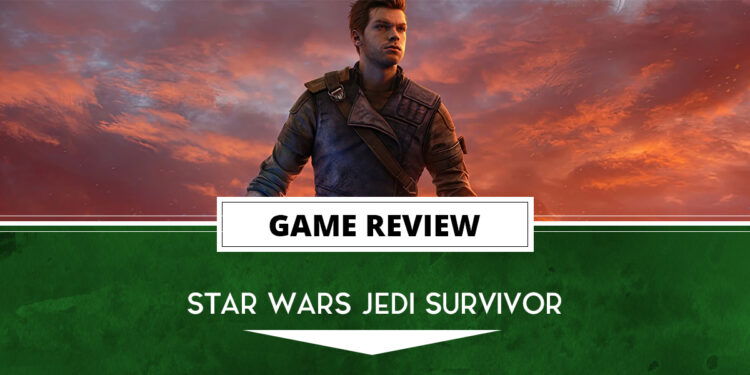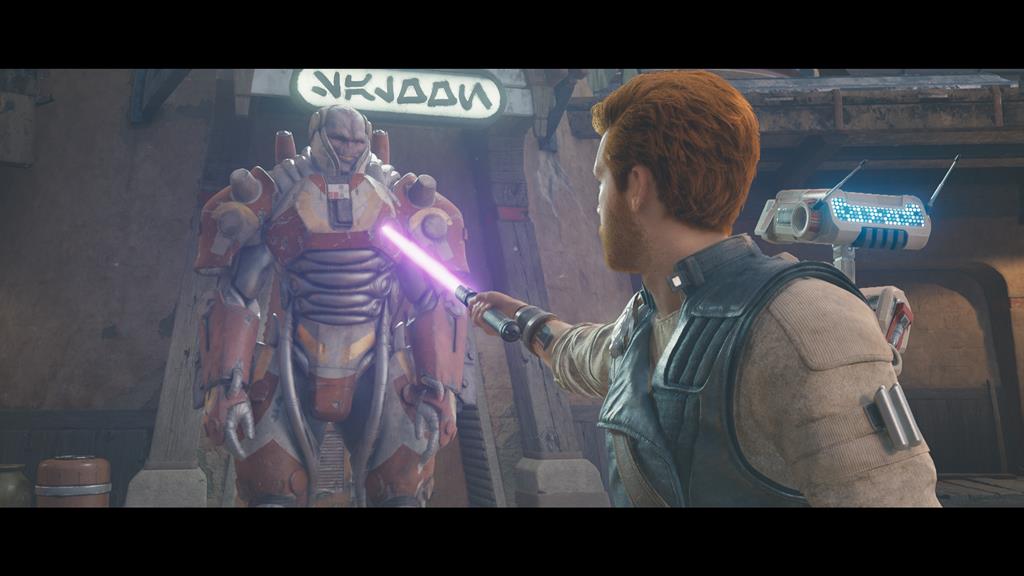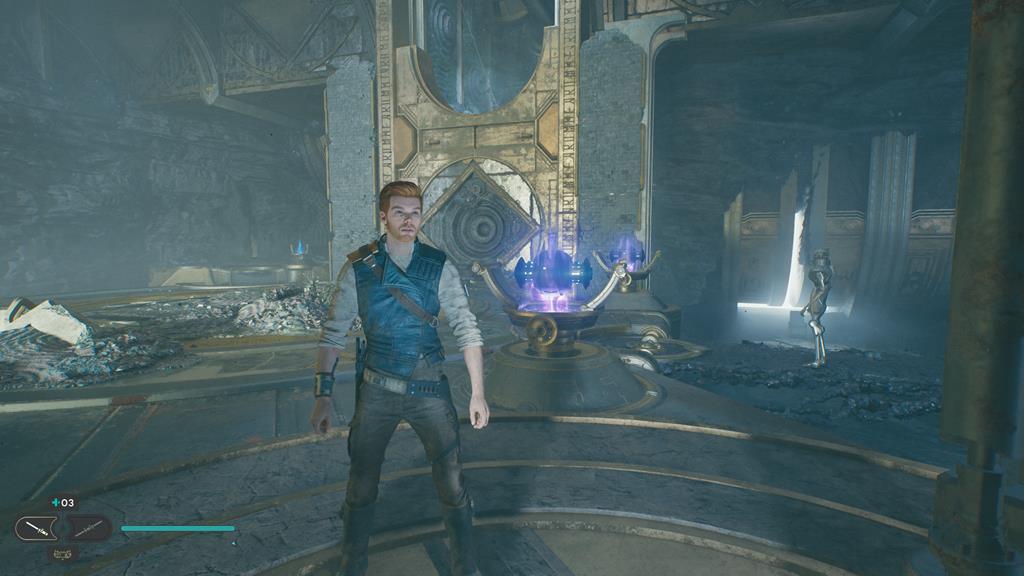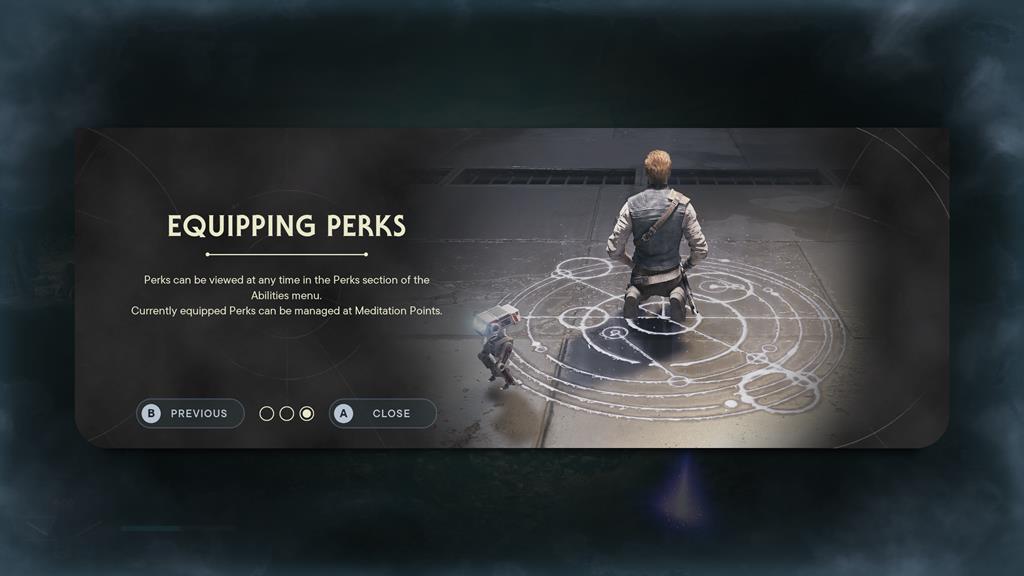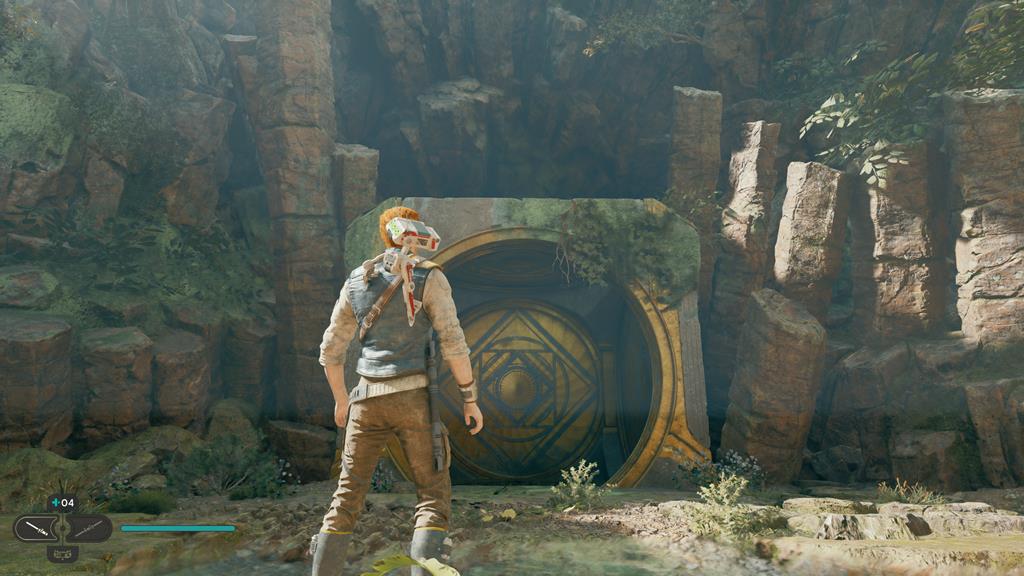After rolling credits on Star Wars Jedi: Survivor, my inner Jedi demanded that I search my feelings. Not only was I reflecting on the emotional journey I had just wrapped in the Koboh system, but it also left me appreciating where the journey had started. Star Wars Jedi: Fallen Order proved to house many challenges.
To developers, this meant selling an original Star Wars story featuring the newcomer to the Jedi scene, Cal Kestis. Any other development team might’ve shoehorned the Kestis into an action-adventure game akin to the Force Unleashed franchise. However, developer Respawn Entertainment took a vastly different approach, pitting players with the challenge of a Metroidvania / Soulslike adventure that challenges the player’s will and skill.
Game Name: Star Wars Jedi: Survivor
Platform(s): PC (reviewed), PS5, Xbox Series X|S
Publisher(s): EA
Developer(s): Respawn Entertainment
Release Date: April 28, 2023
Oftentimes, playing these types of challenging games can leave the unfamiliar, myself included, feeling like they’re running against 90mph wind. But, the more I played, the more I began to find comfort in the challenge and mastery of Cal’s lightsaber. I was curious if Star Wars Jedi: Survivor would rekindle that same flame, baiting me with adventure in the outskirts of the galaxy, a tale of a scraper from Bacca turned Jedi Knight.
Star Wars Jedi: Survivor pays homage to its 2019 roots while embracing a much, much wider vision for Cal’s adventures in some of the best ways, even if it’s got the scars to prove it. Taking place five years after the events of Star Wars Jedi: Fallen Order. Upon starting the game, we are immediately reunited with Cal, albeit a little older and a little more accustomed to the constant friction caused by the growing Empire.
Friends on the Frontlines
You’d probably assume that this Star Wars sequel might pick up right where the journey left off in the first game. Instead, the group has somewhat disbanded, mostly on everyone’s own terms. Cal is off fighting the Empire on the front lines on the hip of Saw Gerrera, while Cere fights but in a different capacity. Merrin, too, isn’t fighting alongside Cal, as he’s seemingly become obsessed with being on the battlefield. Instead, the Nightsister has left Dathomir to see the galaxy, discovering a new future while still dealing with the scars of the past. And Greez Dritus, well, he opened the Pyloon Saloon bar on Koboh. Good old Greez.
New to the scene is Bode Akuna, who is more than just a set of guns for hire. He is introduced right off the bat in the first mission of the game, moving heavy objects for Cal to wall run on or ropes to ride. Bode and Merrin both act as companion fighters. However, it isn’t done in every mission.
When these characters are introduced in a mission, they selectively make appearances. So, you aren’t exactly going to be riding with Bode or Merrin into every single battle. However, you can have them attack a target alongside you or use Merrin’s ability to trap enemies while you tear through them with attacks. I never felt like this was one more system to manage, especially outside the use of ALL of Cal’s stances and abilities. Instead, they both felt like worthwhile safety nets during heavy battalion confrontations.
Platforming Arts
One of the biggest leaps forward in Jedi: Survivor is the game’s traversal system. Much like the combat, Cal has kept many of the abilities learned at the end of Star Wars Jedi: Fallen Order. As the game progresses, you’ll gain new abilities with the ascension cable, mid-air dash, and various forms of Force pulls and pushes. Even the dash evolves over the course of the game, becoming a tool to wisp to hard-to-reach ledges or dash through powered security gates. These maneuvers are crucial in discovering new areas and shrines, similar to The Legend of Zelda: Breath of the Wild. These Jedi shrines are smaller puzzle shrines with story elements attached. Completing these, Force Fractures (battle challenges), and smaller discoveries payout skill points, health, and perks. All are worth venturing out for.
Throughout the game, maneuvers become more challenging as more is thrown your way. I easily found myself setting up and planning out runs or looking ahead to see what obstacles I’d have to overcome with split-second timing. New locations often demand you to perform and execute these with Super Mario-level platforming precision. Wall runs and leaps seem from the first game felt almost dated once I started to get into the flow of things.
Even so, my palms haven’t been this sweaty anticipating a jump since the recent reboot of the Tomb Raider franchise. Both have a distinct focus on combat and deathly leaps of faith to make progress. Star Wars Jedi: Survivor executes these in a way that keeps the story moving from scene to scene, especially when you’re not in combat. Even when I was dashing, zipping, and scouring areas for the path ahead, my guard was fully up, anticipating strikes from Bedlam Raiders, droids, and clusters of Imperial Troops. Or, all of the above.
Combat Evolved
Before playing a sliver of gameplay during a preview session a few weeks ago, I wondered how combat would progress and what these new stances meant for general combat. Would they be a limited thing for certain areas? Would they feel balanced in every situation? Mostly. Although there are enemies that can be destroyed much easier with the right blade, I did find comfort in the game’s added combat styles.
Star Wars Jedi: Survivor adds dual-wielded blades along with a crossguard and the blade/blaster combo. These aren’t the traditional weapons of Jedi that have come before him, but Cal makes good use of the lightsaber similar to Kylo Ren’s and turns a clumsy blaster into a quick drawing damage dealer. These were also the two I felt most comfortable with, especially when I customized my blaster with a nice teal and white design.
Perks and Skills
The skills system also got a nice overhaul. There are tons of upgrades for each lightsaber stance, survival (health), and Force upgrades. Perks work in conjunction with skills, providing buffs like increased guard breaks for enemies or filling the skill meter faster. These are found in Jedi Chambers and world exploration. These can be changed at meditation points and found that they balanced out combat and upgrades. They are limited to how many can be can be applied, so, it offered a nice policing system to not make them overpowered.
Adventure Awaits
I want to start this out by saying Star Wars Jedi: Survivor is a big game. In Star Wars Jedi: Fallen Order, much of the traveling and exploring was done from the comfort of the crew’s ship, the Mantis. There were five planets to explore, with backtracking being a main component of the equation. In Jedi: Survivor, there are still planets to search and explore. However, the focus is mostly on Koboh and the lore surrounding it for the game’s plot.
Koboh acts as a hub world of sorts but is much more. After the opening on Coruscant, the Mantis becomes damaged, leaving Cal on the hunt to find parts to fix it. He eventually ends up on Koboh and starts trading conversations with the locals right away. Koboh itself holds many secrets, rumors, and NPCs to talk to. This is by far the biggest transition overall. Much of Jedi: Fallen Order was spent discovering who Cal is and his journey to Jedi knightdom. Koboh instead invites you to explore and talk with the locals, creating a much different atmosphere than the previous entry.
Overall, the world houses many secrets, including a realm just beyond the Koboh Abyss. For locals, this is mostly legend. However, it houses enough mystery for the Empire to hunt for it along with High Republic Jedi, Dagan Gera. While much of the time spent here includes riding the wildlife and exploring conversation trees, it becomes immediately apparent that the planet is meant to be explored. Rumors invite you to investigate events while new abilities open new paths.
If The Legend of Zelda: Tears of the Kingdom has shown, new abilities can drastically change something once familiar and line up a much broader experience, Jedi: Survivor seemingly embraces that, offering up a world that left me curious without distracting me from the main objective. I still have plenty to explore, and this is really the first time since I’ve wanted to dive back in since defeating Ganon and simply seeing what else the game’s world had to offer.
How does it play on PC?
My time with Star Wars Jedi: Survivor was played on the PC, and for the most part, it was a smooth experience. There were some times when I’d experience hiccups while traveling, which would drop my framerate. Thankfully, that was addressed in the most recent path. There’s no Nvidia DLSS, so you’ll have to depend on AMD’s FSR, and I don’t own a widescreen monitor, I couldn’t test the support for it. As for the accessibility options, that’s plenty to tinker with, including FOV, remapping controls, difficulty options, narration, high contrast mode, and even a slow mode which is helpful during combat.
At the start of the game, you’ll have to wait a bit as the game has to optimize game files, which is something we’ve seen in several big-budget 2023 PC games. Not a fan of it, but thankfully, it doesn’t take nearly as long as it does with another game that I won’t mention. This will happen every time to start the game, so get used to it.
Here are my PC specs, in case you were wondering: Ryzen 5900x, 32GB Corsair Vengence Pro 3000mhz, and EVGA RTX 3060 12GB. If you’re curious about what PC requirements you’ll need to play the game, check out our article about that here.
**Edit** Hello Folks, this is your Friendly Editor in Chief here, and I wanted to provide some in-depth concerns regarding the PC performance. While everything that Greg has stated is correct, I wanted to also note that this game is exhibiting a performance issue; more specifically, it loves VRAM. On my PC, which is equipped with an RTX 4090 and AMD 9 5900X, I can see the VRAM usage being used up steadily, regardless of what resolution. The game starts out fine, but as I continued to play, the more that’s on screen, the more VRAM is sucked down, and the game never lets it go. I also noticed a drop in frame rate at times, which dropped down to 45-50, from an otherwise solid 60 fps, at both 1440p and 4K.
This is with all of the available patches, and that’s not a good look for the game. Performance issues aside, it’s a good game, but I wouldn’t say anyone is going to have a perfect experience due to the performance concerns.
Once upon a time, in a galaxy far away…
I’ve genuinely struggled with how to talk about the story in Star Wars Jedi: Survivor. As the name reveals, Cal continues to fight alongside others and survive despite the looming grasp of the Empire. Knowing Saw is alive, this places the story sometime around the events of Star Wars: Rogue One and Star Wars: A New Hope. This is a time when the Empire is strong, pushing on with the help of the menacing Sith Lord, Darth Vader. However, as Rogue One proved, there are other impactful, meaningful stories of those fighting the Empire that doesn’t have the Skywalker name in tow.
Star Wars Jedi: Survivor goes all in on many of those story elements. However, many of these elements lead to spoiler conversations. I will say, that, Respawn Entertainment knows how to weave an interesting tale, something made very apparent by its track record with games like Titanfall 2. Star Wars Jedi: Survivor’s story deploys the best of what Respawn has to offer, with emotions running high from the get-go.
The future beyond Star Wars Jedi: Survivor
I don’t think Star Wars Jedi: Survivor could have replicated the same formula as Star Wars Jedi: Fallen Order while still pushing its gameplay and story to its current level. Sure, it could have had us backtracking on new planets while slowly peeling away layers of story. However, the scope in Jedi Survivor is much wider, much bigger, and embraces changes to tell a different tale.
Star Wars Jedi: Survivor cracks the egg wide open, revealing a bigger, grander adventure for Cal and co. Much like Fallen Order, Star Wars Jedi: Survivor is full of emotion, with Kestis hardened by battle, moments of laughter, and even bringing me to shed a few tears. This exploration had me invested in his story arc, and I don’t think I would have felt the same if he just became a stoic Jedi once knighted.
Cal isn’t the only story I was invested in. Greez, Bode, Cere, and Merrin constantly left me anticipating what would happen next. Merrin is by far the most interesting, deploying some great humor that left me laughing out loud more than once. It was enjoyable to see her join the crew in the first game and see her in action now. I hope there’s more of Cal’s story to tell. Respawn Entertainment has proven its pedigree once again, so much to the degree that it shifted the genre for its franchise and used those changes in mechanics to further emphasize the story. Cameron Monogham’s performance once again shines, delivering a new hope for Jedi fans wanting more than tales of the Skywalker lineage.
Star Wars Jedi: Survivor releases on April 28, 2023, for the PS5, Xbox Series X|S, and PC.
Disclaimer: A code was provided by the publisher for review purposes.
Summary
Star Wars Jedi: Survivor reflects the storytelling pedigree that Respawn Entertainment is known for. Despite it being a deviation in genre from the first entry, Star Wars Jedi: Survivor builds upon familiar gameplay while expanding exploration, combat, and more. Despite the visual performance issues experienced, these didn’t detract from wanting more and finding out how Cal’s story concludes. You might find the overall gameplay loop a bit overwhelming, but there is a meaty, emotional journey that lies ahead, Jedi.


